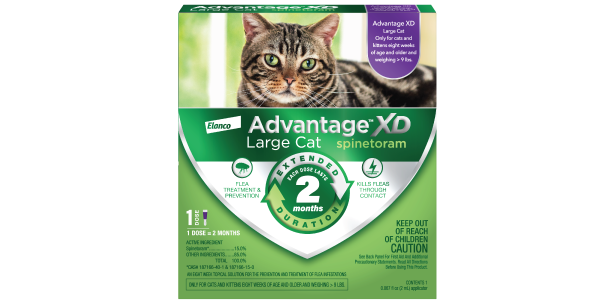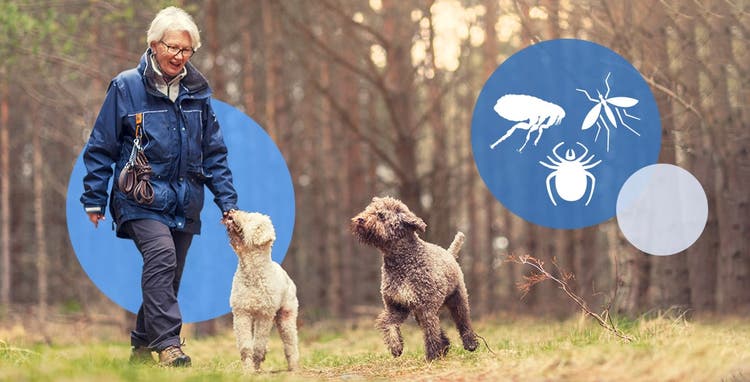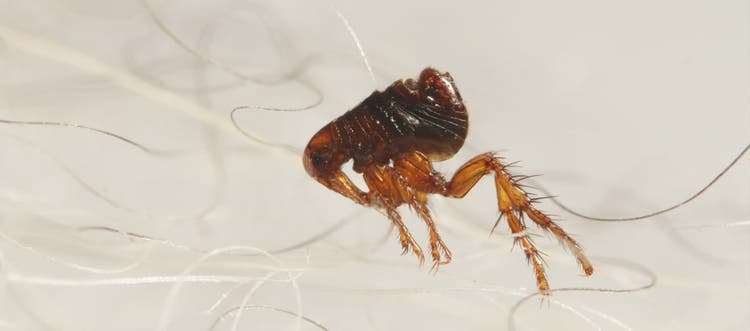Learn how quickly flea treatments begin working.
When you discover fleas on your pet, it’s only natural to want to get rid of the blood-sucking parasites as soon as possible. Not only are they causing your dog or cat discomfort, but they could also lead to a dreaded flea infestation in your home. The good news is that there are lots of products available that will help you get rid of the itchy pests. This guide gives you an idea of how quickly fleas die after treatment, and looks at other factors to consider when choosing the right flea treatment for your pet.
How Long Does It Take for Flea Treatment to Work?
Fleas are extremely mobile and reproduce rapidly, so taking back control and getting on top of the problem can take time. Getting rid of fleas often involves treating both your pet and your home.
Flea control products for pets come in a variety of forms including topicals, flea collars, tablets and sprays. They use various active ingredients to kill fleas, which means they all work slightly differently. The time it takes for products to kill fleas varies depending on the product used.
Topicals and Collars
Imidacloprid is an active ingredient in some topicals and collars that spreads throughout your pet’s skin and coat to kill fleas through contact; this means fleas don’t have to bite your pet to be killed.1 Other flea products, such as oral flea tablets, utilize ingredients that are active in the bloodstream; while there are many effective flea treatment options, how quickly products kill fleas can vary, so it’s always best to refer to the product’s label. Reducing the chance of flea bites by killing fleas on contact, however, helps to protect your pet against discomfort and irritation.
Along with imidacloprid, some flea collars also contain flumethrin, which repels and kills ticks. Imidacloprid also kills flea larvae in the home environment — in carpets and pet bedding, for example — helping to break the flea life cycle.
Flea Shampoos
Flea treatment can also come in the form of a flea shampoo, which is applied directly to your dog or cat’s coat. Although shampooing your pet might feel like an immediate solution for banishing fleas, keep in mind that it doesn’t offer long-term protection. Bathing your pet with a flea treatment shampoo kills fleas on them at the time of bathing, so they’ll be at risk of re-infestation after the shampoo has been rinsed away. Flea shampoos are a great way to kill fleas on your pet quickly, but be sure to follow your pet’s bath with a longer-term preventive flea treatment.
Household Flea Sprays
By the time you spot a flea on your pet, there could be a few generations of new fleas in your home. The female flea can lay up to 50 eggs per day, with these eggs hatching into flea larvae in your home and burrowing into carpets, sofas, your pet’s bedding and anywhere else your pet goes. After a period of time, these larvae hatch into new fleas ready to bite your pet and start the cycle all over again. Treating your home, as well as your pet, is an important part of getting on top of a flea infestation.
Once you’ve cleaned your house by vacuuming and washing bedding, use a special household flea treatment to help break the flea life cycle. These handheld sprays can help you pay particular attention to places flea eggs, larvae and pupae like to hide, such as under beds and furniture or in carpet and upholstery.
Always follow the instructions on the can and treat your home thoroughly — fleas really can get anywhere! The time it takes to remove fleas from your home will depend on the level of infestation you have. In some cases, it can take several months to get rid of them completely. Persistence is key.
I’ve Treated My Pet and My Home, So Why Am I Still Finding Fleas?
It’s frustrating to spot a flea on your pet or flea dirt in your pet’s coat after the time and effort it took to treat your pet and thoroughly de-flea your home.
The best advice is to give it time. Once a flea infestation begins, it can take a while to completely clear it. Flea larvae can remain dormant in your home for months, so new fleas may continue to emerge — even after treatment. These fleas will quickly die after hatching if you’ve treated your home and kept up with regular flea preventive for your pet, but it can take a while for all the existing fleas to hatch and be killed.
It’s also worth remembering that no flea treatment forms a force field to stop fleas from jumping onto your pets — but an effective treatment will quickly kill fleas once they come into contact with your pet. Once you’ve gotten on top of an infestation, keeping up with regular flea treatment will help to make sure your pet and your home stay protected.
References:
- Mehlhorn et al. Parasitol Res (2001) 87:198-207, information is regarding mode of action and is not intended to relate to speed of kill or to imply parasites can be completely stopped from biting.

Seresto® Flea & Tick Collar for Dogs
An easy-to-use, odorless, non-greasy collar that kills and repels fleas and ticks for 8 continuous months.

Advantage® XD (spinetoram)
Kills fleas for two months with one dose, outlasting the typical six-week flea life cycle — and the monthly competition.

Advantage® Treatment Shampoo for Dogs & Puppies
A treatment shampoo that kills fleas and ticks on contact.

Advantage® Treatment Shampoo for Cats & Kittens
A treatment shampoo that kills fleas and ticks on contact.

Advantage® Carpet & Upholstery Spot Spray
Help control an infestation in your home by killing fleas, brown dog ticks, dust mites and bed bugs. Not for use on pets. Use as directed.



